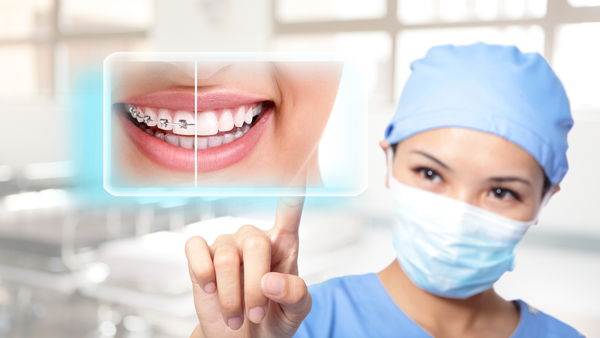Things about Legacy Orthodontics
Table of ContentsThe Greatest Guide To Legacy OrthodonticsThe Ultimate Guide To Legacy OrthodonticsLegacy Orthodontics Things To Know Before You Get This10 Simple Techniques For Legacy OrthodonticsSome Ideas on Legacy Orthodontics You Should Know
In addition, we use adjustable therapy routines, versatile payment options and an enjoyable, pleasurable experience.An orthodontist is a dental expert trained to diagnose, avoid, and treat teeth and jaw abnormalities. They correct existing problems and are educated to identify issues that may establish in the future. Orthodontists work with people of every ages, from kids to grownups. Individuals usually link a best smile with health.
Malocclusion, or misaligned teeth, can result in dental problems, consisting of dental cavity, gum condition, and challenging or excruciating eating. But not everyone is birthed with straight teeth. If you have a bad bite or large areas in between your teeth, you may intend to seek advice from a dentist focusing on orthodontic treatment.
The Ultimate Guide To Legacy Orthodontics
( Picture Credit Report: DigitalVision/Getty Images) Orthodontists make use of fixed and removable dental gadgets, like braces, retainers, and bands, to alter the setting of teeth in your mouth. Orthodontic therapy is for oral irregularities, consisting of: Misaligned teethBite troubles, like an overbite or an underbiteCrowded teeth or teeth that are also much apartJaw misalignmentThe objective of orthodontic treatment is to enhance your bite.
While you may assume of orthodontists as primarily for kids or young adults that need braces, they can correct dental issues at any kind of age. Orthodontists go to university, dental college, and orthodontic institution.
All orthodontists are dental practitioners, however not all dental experts are orthodontists. Orthodontic residency programs supply intensive, focused instruction for dental specialists. They concentrate on two areas: How to effectively and securely relocate teeth Just how to properly assist development in the teeth, jaw, and faceOnce an orthodontist has completed training, they have the option to end up being board accredited.
9 Simple Techniques For Legacy Orthodontics
Misalignment, or malocclusion, is the most common reason people see an orthodontist. It is hereditary and is the outcome of dimension distinctions between the upper and reduced jaw or in between the jaw and teeth. Malocclusion brings about tooth overcrowding, a twisted jaw, or irregular bite patterns. Malocclusion is usually treated with: Your orthodontist attaches metal, ceramic, or plastic square bonds to your teeth.
If you have only small malocclusion, you might be able to make use of clear braces, called aligners, instead of typical dental braces (https://packersmovers.activeboard.com/t67151553/how-to-connect-canon-mg3620-printer-to-computer/?ts=1727695183&direction=prev&page=last#lastPostAnchor). Some people require a headgear to assist move teeth right into line with pressure from outside the mouth. After braces or aligners, you'll need to use a retainer. A retainer is a custom tool that maintains your teeth in position.
They're frequently made use of on children. They can develop additional space in the mouth without needing to draw teeth. If you have a severe underbite or overbite, you may need orthognathic surgery (also called orthodontic surgical treatment) to extend or reduce your jaw. Orthodontists use cables, medical screws, or plates to support your jaw bone.
You might need to see an orthodontist if you have: Crowding or not adequate area for every one of your teethOverbite, when your top teeth come your base teethUnderbite, when your bottom teeth are too much forwardSpacing or concerns with gapsCrossbite, which is when your top teeth fit behind your bottom teeth when your mouth is closedOpen bite or a vertical space between your front base and top teethMisplaced midline, when the center of your bottom and upper teeth don't line up Fixing a dental malocclusion can: Make biting, chewing, and talking easierImprove the balance of our face and your general appearanceEase discomfort from temporomandibular joint problemsDifferent your teeth and make them simpler to clean up, helping stop dental caries or dental caries It's typically a dental professional who first notifications misaligned teeth throughout a routine exam.
How Legacy Orthodontics can Save You Time, Stress, and Money.

During your first orthodontic consultation, you'll likely have: An oral examPhotos taken of your face and smileDental X-raysPanoramic (360 level) X-rays of your face and headImpressions to produce molds of your teethThese tests will aid your orthodontist recognize just how to continue with your treatment. orthodontics. An orthodontist is a dental expert who's try this had training to treat your teeth and jaw
Orthodontists may perform surgical procedure, exams,X-rays,and more to aid you obtain a much more comfy, healthier smile. An orthodontist is focused on your bite, so something like a broken tooth would certainly be managed by a dental practitioner. Orthodontists are dentists but not all dental professionals are orthodontists. Orthodontists are concentrated on your bite, or the way your teeth meshed, and the straightness of your teeth.
Ever asked yourself just how celebs always appear to have flawlessly lined up teeth? Orthodontists are oral specialists that concentrate on fixing abnormalities in the teeth and jaws.
The Main Principles Of Legacy Orthodontics

, orthodontists have a diverse toolkit at their disposal. These tried-and-true braces utilize a system of braces adhered to the teeth and connected by wires.
These detachable trays are personalized to gradually shift the teeth's position. In situations of narrow jaws, palatal expanders can be used to produce space for correct tooth positioning.